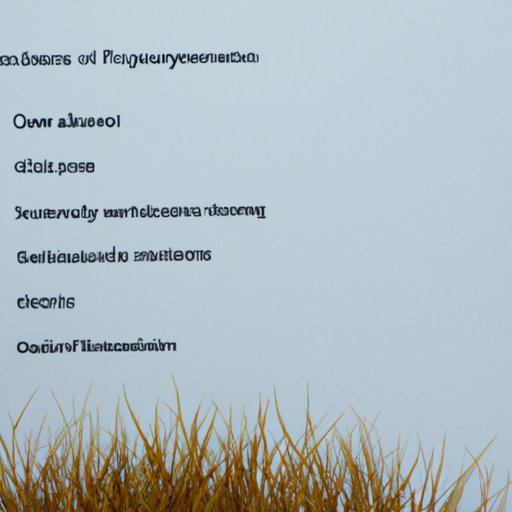Introduction
A science conclusion is the final part of a scientific research paper or report. It provides an overview of the main points made in the paper and summarizes the results of the research. The purpose of writing a science conclusion is to explain the results of the study and discuss their implications for the research question being investigated.
Outlining Main Points and Summarizing Results
The first step in writing a science conclusion is to outline the main points of the paper. This includes identifying the main points that were discussed throughout the paper, as well as any key findings from the research. Once the main points have been identified, they should be summarized in the conclusion. This allows the reader to quickly get an overview of what the paper was about without having to read through the entire paper.
In addition to outlining the main points, it is important to summarize the results of the study. This includes providing an overview of any data that was collected, as well as any conclusions that can be drawn from the research. For example, if the research was looking at the effects of a particular drug on a certain population, the conclusion would provide an overview of the results and explain how the results relate to the research question.
Discussing Implications of Findings
Once the main points and results of the study have been outlined and summarized, the conclusion should then discuss the implications of the findings. This means explaining how the results of the study relate to the research question, as well as any unanswered questions or areas of further research that may arise from the findings. For example, if the research was looking at the effects of a particular drug on a certain population, the conclusion may discuss any potential implications for the use of the drug in other populations.

Describing Limitations and Potential Sources of Bias
When writing a science conclusion, it is important to acknowledge any limitations of the study and describe any potential sources of bias. This includes identifying any methodological issues with the study, such as sample size or lack of control variables, as well as any potential sources of bias, such as researcher bias or selection bias. Acknowledging these limitations and potential sources of bias allows the reader to evaluate the results of the study more critically and draw their own conclusions.
Including Relevant References
In order to write a successful science conclusion, it is essential to include relevant references. This means defining the necessary references, such as journal articles, books, or websites, and citing them accurately. Accurate referencing allows readers to easily access the sources used in the paper and helps to ensure that the information presented is reliable and trustworthy.
Providing a Final Take-Home Message
Finally, the conclusion should provide a final take-home message. This involves summarizing the main points of the paper and offering suggestions for future research. For example, if the research was looking at the effects of a particular drug on a certain population, the conclusion may suggest further studies to investigate the effects of the drug in different populations.
Conclusion
Writing a science conclusion can be a challenging task, but it is an important part of any scientific research paper or report. By outlining the main points and summarizing the results of the study, discussing the implications of the findings, describing any limitations or potential sources of bias, including relevant references, and providing a final take-home message, you can create an effective and informative science conclusion.
(Note: Is this article not meeting your expectations? Do you have knowledge or insights to share? Unlock new opportunities and expand your reach by joining our authors team. Click Registration to join us and share your expertise with our readers.)
